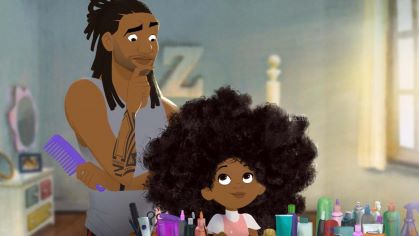Racial and Cultural Diversity Participation in Canadian Media
Since those early beginnings, advances in media technology have facilitated the expansion of racially and culturally diverse voices and perspectives and have brought diverse communities together, resulting in a growth in popularity of racially and culturally diverse media across the country. A 2013 study for Canadian Heritage reported a total of 427 ethnic media print publications across Canada.[2]
What are the major differences between diverse and mainstream media? First, visible diverse media is usually owned and operated by members of the group to which its content is aimed. As a result, racially and culturally diverse media content is verified by someone with a vested interest in how this community is represented and an adequate knowledge of negotiating cultural identity. Racially and culturally diverse media generally present issues related to minority groups within a more representative framework than in White-owned media.[3] For example, a study found that Black news outlets were more likely to refer to “victims” in coverage of police brutality and to emphasize references to communities, families and children.[4]
Perhaps most importantly, media outlets that are owned and operated by members of diverse communities ensure that those communities’ voices and experiences are accurately reflected in media. As Dave Steward II, founder of Black-owned animation studio Lion Forge, puts it, “there needs to be representation in the executive teams that have the power to be able to push the content through (…) because if you have content that’s, let’s say, is from a Black creator and has a Black cast, but you have non-Black executives overseeing the projects, all too often… there are stories of those executives using their power to change that content based off of their perception and portrayal of a particular group.”[5]

Lion Forge’s award-winning short Hair Love
This extends to news as well, both in terms of what is covered and how it is framed. Black news outlets are more likely to cover topics like voting access and the disproportional impact of the pandemic on Black communities. They’re also more likely to contextualize news stories within broader issues such as disparities in medical care, mass incarceration and historic (and ongoing) discrimination against Black people.[6]
[1] (n.d.) “The Provincial Freeman.” Ontario Heritage Trust. Retrieved from https://www.heritagetrust.on.ca/en/index.php/plaques/provincial-freeman?p=plaques/provincial-freeman
[2] Yu, S (2016). Instrumentalization of Ethnic Media. Canadian Journal of Communication. 41, 343-351.
[3] Arora, P., &Viswanath, K. (2000). Ethnic media in the United States: an essay on their role in integration, assimilation and social control. Mass Communication & Society, 3(1),39-56.
[4] Thompson-Morton, C. (2020) Why Black Media Matters Now. Center for Community Media. Retrieved from http://blackmediareport.journalism.cuny.edu/
[5] LaPorte, N. (2020) “The Black-owned animation studio behind Hair Love is teaching Hollywood how to be authentic.” Fast Company. Retrieved from https://www.fastcompany.com/90540015/the-black-owned-animation-studio-behind-hair-love-is-teaching-hollywood-how-to-be-authentic
[6] Thompson-Morton, C. (2020) Why Black Media Matters Now. Center for Community Media. Retrieved from http://blackmediareport.journalism.cuny.edu/
